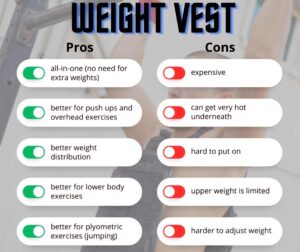Thinking about adding a weighted vest to your workouts? It can boost calories burned, strength, and endurance—but it also comes with risks if used incorrectly. Here’s a quick, balanced guide you can share.
Exercising with a weighted vest can boost calorie burn, strength, and endurance, and even support bone density and heart health. But improper use can strain joints, spine, and muscles. Start light (5–10% of your body weight), ensure a snug fit, and focus on form. Gradually increase weight and duration as you adapt. Not for everyone, check with a healthcare professional if you have injuries, arthritis, heart/lung conditions, or balance concerns. Hydrate, monitor heat, and listen to your body.
Best-practices at a glance:
- Start light: 5–10% of body weight
- Ensure snug fit to avoid shifting
- Prioritize form over weight
- Progress gradually
- Use for a variety of activities: walking, hiking, squats, push-ups, pull-ups
Pros:
- Higher calorie burn
- Builds strength, endurance, and core stability
- May improve bone density and VO2 max
- Time-efficient, versatile
Cons/Risks:
- Joint, knee, hip, ankle strain
- Spinal stress and potential back/neck pain
- Poor fit can cause bad biomechanics
- Discomfort, overheating, chafing
- Not suitable for everyone (consult if injuries or chronic conditions)
Best practices (quick): light start, snug fit, proper form, gradual progression.

#WeightedVest #FitnessTips #WorkoutSmart #StrengthTraining #CardioBoost #BoneHealth #InjuryPrevention #FitLife #HealthAndWellness #FitnessJourney
